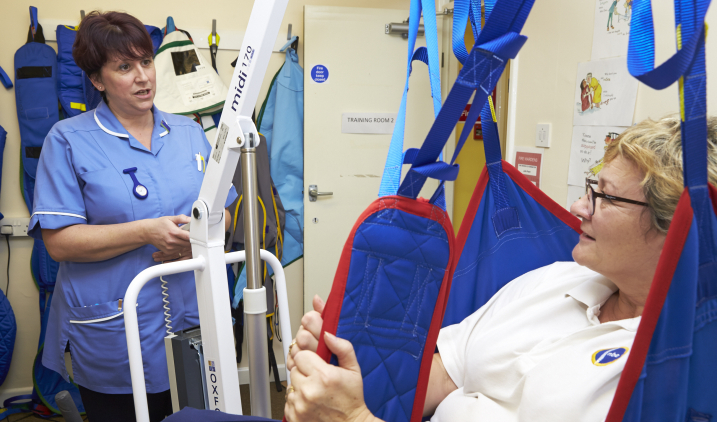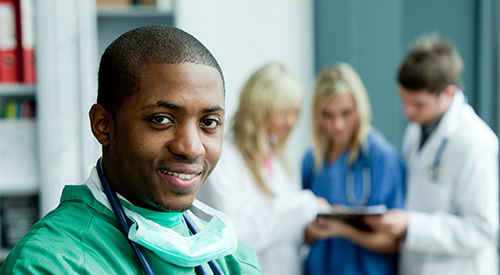The Responsibilities and Skills of a Clinical Safety Officer in Modern Healthcare Settings
The Responsibilities and Skills of a Clinical Safety Officer in Modern Healthcare Settings
Blog Article
Exactly How a Scientific Safety And Security Police Officer Protects Both Clients and Doctor
The duty of a Clinical Security Police officer is pivotal in making sure a safe and secure healthcare atmosphere, where both companies and people can thrive. By systematically evaluating risks and setting up extensive security procedures, these specialists not only boost client treatment however likewise shield medical care employees from potential liabilities.
Role of the Medical Security Policeman
The function of the Medical Safety Officer (CSO) is essential to guaranteeing individual security and mitigating dangers within healthcare settings. The CSO acts as a pivotal number in the development and execution of safety and security methods and techniques, concentrating on both professional and operational elements. By promoting a culture of safety, the CSO proactively involves with medical care specialists to improve understanding of potential threats and urge adherence to established safety criteria.
Along with oversight obligations, the CSO is associated with educating team on finest practices associated with individual security. This includes facilitating training sessions, workshops, and recurring expert development chances targeted at promoting a positive approach to security. The CSO additionally works together with interdisciplinary groups to explore incidents, analyze information, and identify patterns that might suggest underlying concerns.

Danger Assessment and Monitoring
Effective threat evaluation and monitoring are essential parts of the Scientific Safety Police officer's responsibilities. This procedure involves recognizing potential threats that might endanger client safety and security or disrupt health care operations. The Professional Security Police officer employs methodical methodologies to assess threats connected to scientific techniques, equipment, and ecological variables within healthcare settings.
A thorough danger analysis starts with data collection and analysis, consisting of case reports, client comments, and conformity audits. This details functions as a foundation for determining fads and focusing on areas requiring intervention. When threats have actually been assessed, the Medical Security Policeman teams up with multidisciplinary groups to implement and establish danger administration approaches focused on reducing determined dangers.
Additionally, continuous tracking and assessment are vital to ensure that danger monitoring steps work. The Medical Security Officer on a regular basis reviews incident data and safety efficiency indicators, adjusting approaches as required to adjust to transforming situations within the medical care environment. Clinical safety officer. By promoting a culture of security that encourages reporting and openness, the Clinical Safety Police officer plays an essential duty in reducing dangers and improving the total quality of treatment, consequently shielding both people and doctor
Carrying Out Security Methods
Executing safety and security protocols is critical for making sure a constant method to client treatment and decreasing possible threats in health care settings. A Scientific Safety and security Officer plays a pivotal role in the advancement and implementation of these protocols, which are designed to resolve numerous aspects of person security, including medication administration, infection control, and emergency situation reaction procedures.
To successfully apply safety and security methods, the Professional Safety Policeman teams up with interdisciplinary groups to tailor standards that are reflective and evidence-based of best techniques. This includes examining existing procedures, determining locations for improvement, and integrating comments from health care providers and people alike. In addition, the police officer has to guarantee that procedures align with regulative demands and certification criteria.
Monitoring compliance with safety protocols is essential. The Clinical Safety and security Policeman develops metrics to evaluate adherence and evaluates results, providing data-driven understandings to notify future procedure modifications. Normal audits and reviews add to preserving a culture of safety and security, where continuous renovation is focused on. By promoting open interaction and encouraging reporting of security events, the Clinical Safety Officer assists to develop an environment where both clients and carriers feel secure, inevitably boosting the general quality of care.
Training and Education Efforts
A Clinical Security Police officer's dedication to recurring training and education and learning initiatives is crucial for cultivating a well-informed medical care labor force furnished to copyright patient security standards. These campaigns are made to keep medical care professionals notified concerning the most current safety methods, modern technologies, and regulative demands, thereby boosting their capacity to supply secure and effective care.
Educating programs usually include a selection of subjects, consisting of danger management methods, occurrence reporting procedures, and the importance of sticking to evidence-based guidelines - Clinical safety officer. By involving staff in simulations and instance studies, Clinical Safety Officers can produce practical circumstances that permit doctor to exercise their reactions to potential security concerns, enhancing their abilities and confidence
In addition, education efforts highlight the value of a society of safety and security within the organization. By promoting open communication and encouraging personnel to voice concerns without concern of chiding, Medical Safety Police officers assist produce an environment where constant knowing is valued. Ultimately, detailed training and education not only encourage healthcare specialists however likewise add considerably to minimizing damaging events and boosting general patient outcomes, strengthening the critical duty of Professional Security Police officers in fostering a more secure health care setting.
Enhancing Communication and Partnership
The structure of a safe health care environment is constructed on durable interaction and cooperation among healthcare experts. Medical Security Officers (CSOs) play a vital role in promoting these necessary components within healthcare setups. By promoting open dialogue and interdisciplinary teamwork, CSOs guarantee that vital details pertaining to individual safety, best methods, and prospective risks is successfully shared among all employee.
To enhance communication, CSOs execute structured communication methods, such as standardized handoff pop over to these guys procedures and routine security instructions. These practices not only reduce the opportunities of misunderstandings however additionally empower team to voice problems and share understandings that can cause enhanced individual end results. Furthermore, CSOs assist in joint meetings that combine diverse medical care teams to talk about safety and security concerns, enabling cumulative problem-solving and innovation.
Furthermore, CSOs take advantage of technology, such as electronic health records and safe and secure messaging systems, to improve information flow and make sure all suppliers have access to up-to-date patient information. By promoting a society of openness and accountability, Clinical Safety and security Officers not just secure individuals but also sustain healthcare carriers in delivering secure and effective care, inevitably boosting the general healthcare experience for all stakeholders involved.
Verdict

The role of the Scientific Safety And Security Officer (CSO) is important to ensuring client security and mitigating threats within healthcare settings - Clinical safety officer. By promoting a culture of security, Visit Website the CSO proactively involves with healthcare experts to enhance awareness of prospective dangers and urge adherence to developed safety and security standards
The Medical Security Policeman routinely evaluates event data and security performance signs, changing methods as needed to adjust to altering scenarios within the medical care setting. By cultivating a society of security that motivates reporting and transparency, the Clinical Security Policeman plays a pivotal role in decreasing risks and enhancing the overall top quality of treatment, therefore shielding both people and medical care carriers.
Inevitably, the payments of the Medical Safety Officer dramatically lower the probability of negative events, ensuring greater requirements of care and safety and security within the health care system.
Report this page